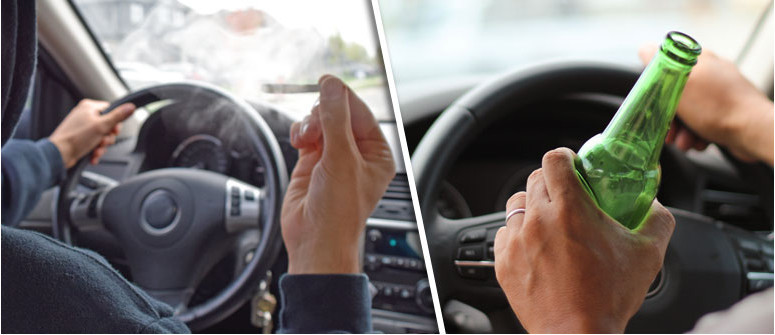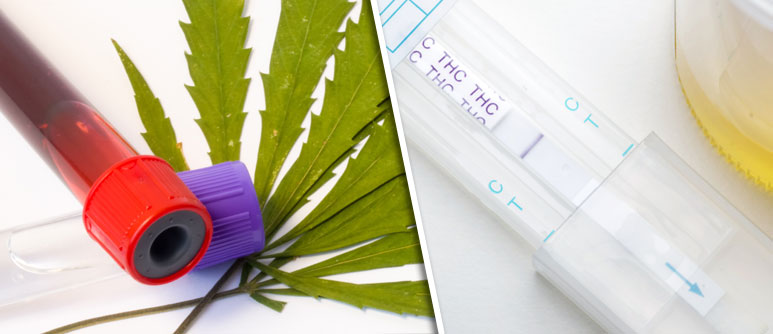Driving under influence: cannabis compared to alcohol

In this article, we look at driving under the influence of cannabis, how it compares to alcohol, and the challenges of combating stoned driving.
As marijuana use, both recreational and medical, becomes more acceptable and legal markets come to replace the outdated system of prohibition, cannabis and cannabis-derived products are going to become much more accessible.
One major consideration for governments looking to legalize cannabis is how to treat this new, suddenly legal drug, when used by people behind the wheel. After all, how impairing is cannabis really to someone in control of a vehicle?
Let's have a detailed look at the topic of driving under the influence of cannabis, how it compares to alcohol, and the complicated topic of creating new laws to combat stoned driving.
Let’s start by answering the obvious question on everyone’s mind:
Is driving stoned as bad and stupid as driving drunk?
There is a general consensus among researchers that driving under the influence of THC (the main psychoactive ingredient in cannabis responsible for getting you high) doubles your risk of being involved in an accident.
This differs quite drastically to driving drunk; a recent study of US crash data shows that the risk of driving with a BAC (blood-alcohol content) level of 0.08, the legal limit for driving, resulted in a 20-fold increase of a fatal accident for 20-year-old drivers. For adults up to the age of 34, the increase was 9-fold.[1]
Eduardo Romano, the lead author of the study and a senior research scientist at the Pacific Institute for Research and Evaluation, said that marijuana did not increase the risk of having an accident after the study results had been adjusted for demographics (including age, sex, and race) and the presence of alcohol.
Regardless, he is convinced driving under the influence of cannabis still poses a risk, just a lesser risk that many people expected.
So, what is it that apparently makes stoned drivers less dangerous than drunk drivers? Well, it comes down to the simple fact that cannabis doesn’t have the same effect on our bodies as alcohol.
Studies have shown that people under the influence of cannabis can still pass simple tests like addition and subtraction math problems or memory challenges, although they generally needed to use more brainpower to do so. Drunk people, on the other hand, were more likely to fail these tests.
And, since cannabis and alcohol affect our bodies very differently, stoned drivers also tend to drive very differently to drunk drivers.
Whereas drunk drivers tend to drive faster and more carelessly, stoned drivers tend to drive more slowly (which, in many cases, can be just as dangerous as driving quickly).
However, that’s not to say that driving under the influence of cannabis isn’t dangerous. Despite out-performing drunks at memory tests and math problems, stoned drivers have been shown to struggle handling multiple tasks at once and reacting to unexpected circumstances (both key aspects of driving). Hence, it’s always best to stay off the road after lighting up.
THE PROBLEM WITH MEASURING CANNABIS INFLUENCE IN DRIVERS

A common technique used by police to identify drunk drivers (apart from a breathalyzer) is the “field test,” a test where officers ask drivers to complete 3 basic tasks; follow a pen with their eyes as the officers move it back and forth; walk 9 steps heel to toe, turn around on one foot, and walk back; and stand on one leg for 30 seconds.
This test has been shown to 88% of drunk drivers. However, it’s shown to do much worse at catching those under the influence of cannabis.A 2012 study published in the journal Psychopharmacology showed the test only caught 33% of stoned drivers.[2]
There has been a lot of study about the deficits caused by varying BAC levels, both breathalyzers and the “field test” serve as pretty sound methods of identifying drivers that are too intoxicated to be behind the wheel.
Unfortunately, this isn’t the case for cannabis. Identifying drivers under the influence of cannabis is hard. And coming up with a standardized set of rules governing how much weed is too much when it comes to driving is even harder.
THC levels are tested using blood or urine tests. Urine tests only test for THC metabolites (substances created after the body metabolizes cannabis) which can be presented for weeks after a person last lit up.
Blood tests, on the other hand, are able to test for actual THC levels in the blood. Cannabis users can expect to test positive for THC via a blood test for roughly 24 hours after smoking, given they don’t consume weed regularly. Regular tokers can still test positive for THC via a blood test up to a week after last using.
Most of the states in the US with legal cannabis have laws that equate any detectable level of THC metabolite in urine with detectable levels of actual THC in blood, and criminalize both. A total of 9 states in the US have zero tolerance laws for driving under the influence of cannabis.
Out of the 26 states with some kind of legalized cannabis, only 6 have set legal limits for THC blood concentrations for drivers. In Colorado and Washington, for example, the limit is five nanograms per milliliter of blood, or five parts per billion.
These limits have received criticism; European studies argue that they are way too high, suggesting to drop the limit to 1 nanogram per mililiter instead.
But even if we could agree on the correct limit for THC blood concentrations in order to keep our roads safe, we’d still be left with one final problem; tolerance.
With alcohol, you can rest assured that a 25 year-old on heading back from his weekly bender is just as impaired as a seasoned alcoholic. We have studies to prove that, no matter how well you think you hold your liquor, after a certain BAC level, you’re simply too drunk to be on the road.
This isn’t quite the same with cannabis; a seasoned stoner with a decent tolerance for cannabis might be fine to drive after smashing a cone, whereas a teenager who just took a few puffs off his first joint might not.
This is due to because cannabis users quickly build up a tolerance to THC and, after a while, seem to be less noticeably impaired after using weed. It’s also important to realise that cannabis affects people differently; while it might lull one person to sleep, it might leave the next feeling energetic and uplifted (many users claim that some strains help them concentrate on taskwork).
CANNABIS AND DRIVING: A TRICKY COMBINATION
All of this evidence combined hopefully makes it clear that creating laws to fairly and safely govern cannabis use and driving is no simple task. While cannabis seems to be less impairing to drivers in general, it is still a mind-altering substance and needs to be controlled appropriately. Our 2 cents? Just don't smoke and drive...
- ^ NCBI, Drugs and alcohol - their relative crash risk., retrieved December-04-2018
Link - ^ NCBI, A placebo-controlled study to assess Standardized Field Sobriety Tests performance during alcohol and cannabis intoxication in heavy cannabis users and accuracy of point of collection testing devices for detecting THC in oral fluid, retrieved December-04-2018
Link




